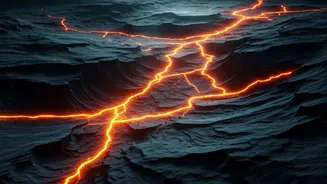Early Warning Systems
Recent studies have focused on identifying precursors to earthquakes. One significant finding involves subtle changes in the Earth's magnetic field, which
were observed to precede seismic events in California. Scientists have also explored the correlation between cosmic radiation and earthquakes. These signals from space provide additional data for early warning systems. Combining these diverse sources of information, from magnetic field fluctuations to cosmic signals, is crucial for improving the accuracy and timeliness of earthquake predictions. Moreover, scientists are delving deep into the geological structures, investigating fault lines and rock formations, to fully understand earthquake dynamics.
Unraveling Complex Faults
Researchers are investigating the intricate behavior of fault lines. A deeper understanding of these geological structures is crucial for predicting earthquakes. One area of focus is on the San Andreas Fault, where scientists are using new techniques to study the forces that trigger seismic activity. Another research area is off the coast of Costa Rica, where geophysicists are working to characterize the megathrust fault. The study of “segment-jumping” in the Ridgecrest earthquakes, where faults are linked to each other, is also essential. This allows for more realistic simulations of how earthquakes spread across a wider area, creating a more comprehensive picture.
Revolutionary Prediction Models
The development of sophisticated models is at the forefront of earthquake prediction efforts. These models are designed to incorporate various data points, including magnetic field shifts, cosmic radiation signals, and fault line behavior. Scientists are looking at how different fault lines interact and how the stress in the Earth's crust accumulates and releases energy. New models can account for previously overlooked elements in risk assessments, as highlighted by a groundbreaking discovery related to earthquake dynamics. By integrating multiple datasets, these new models can provide more accurate and reliable predictions, assisting in early warning systems.
Enhancing Disaster Preparedness
The ultimate goal of all this research is to improve disaster preparedness. As these new earthquake prediction models are refined, they can enhance early warning systems and save lives. This allows for better risk assessment, enabling infrastructure improvements and improved emergency response strategies. Educating the public about earthquake risks and the actions to take when an earthquake occurs is an important factor. By combining scientific advances with public awareness, communities can be better equipped to face the threat of earthquakes, minimizing their impacts and bolstering community resilience.







